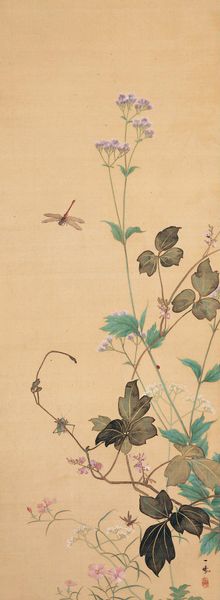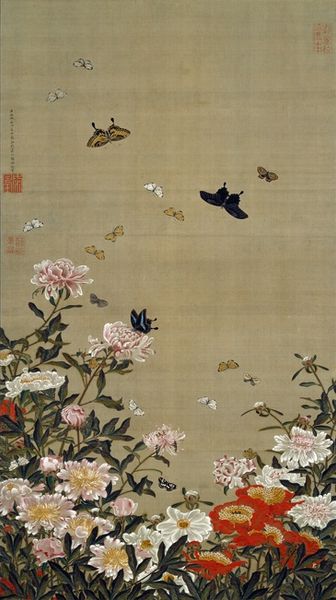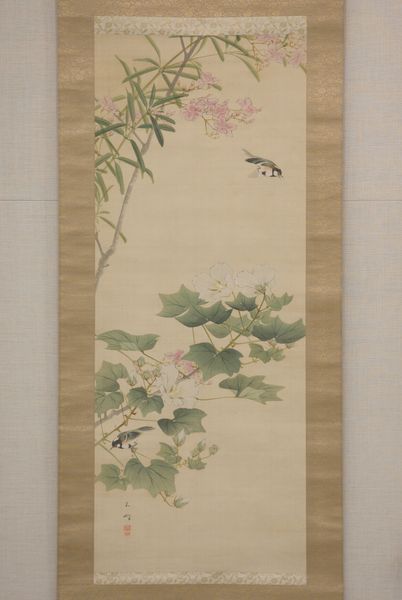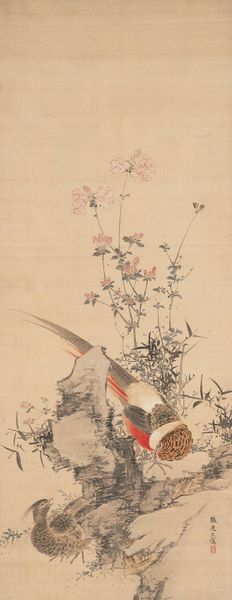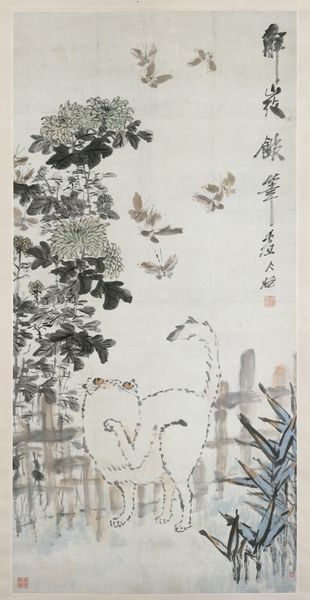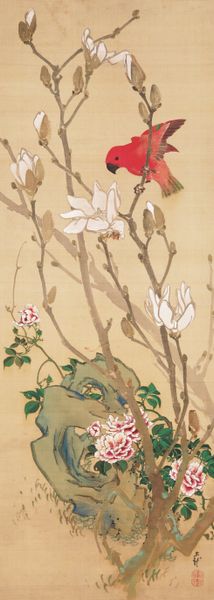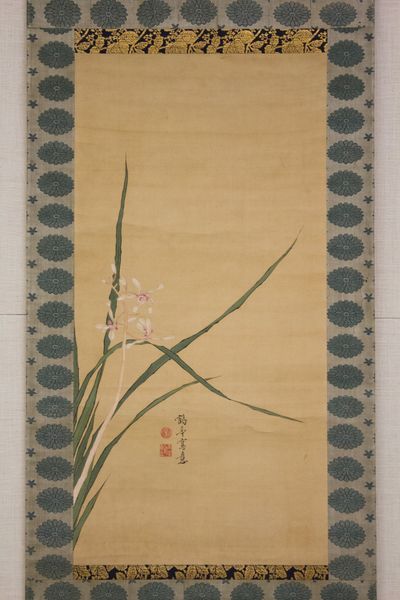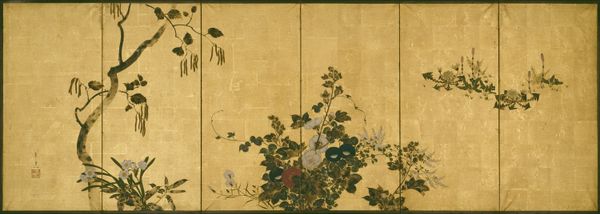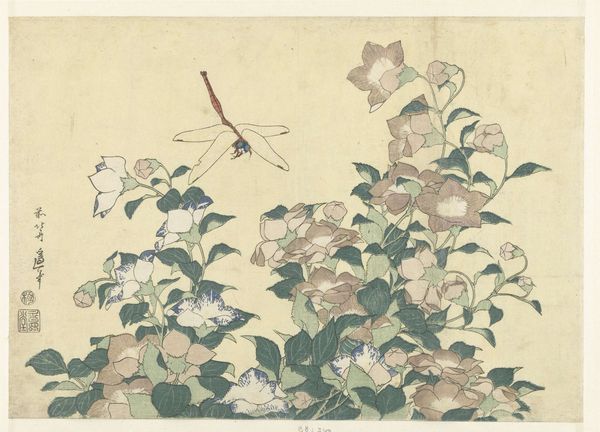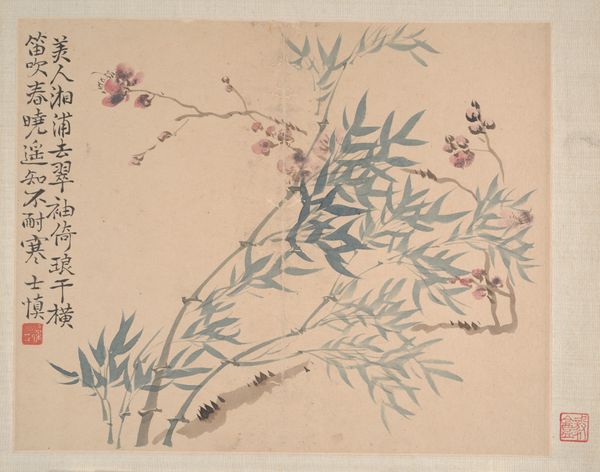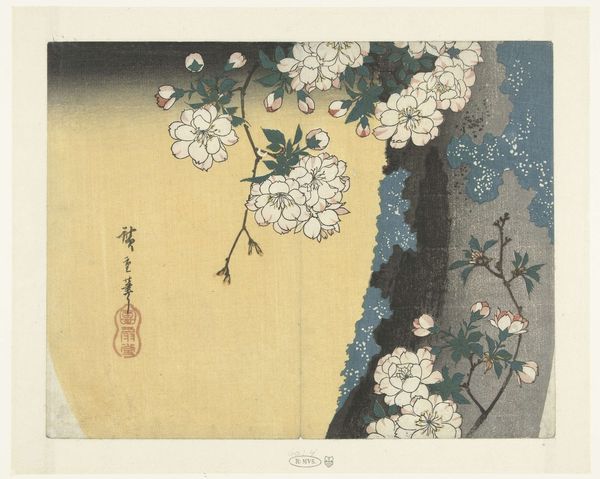
watercolor
#
asian-art
#
landscape
#
watercolor
#
orientalism
Dimensions: 14 3/8 x 10 3/4 in. (36.5 x 27.3 cm)
Copyright: Public Domain
Curator: Let's discuss "Garden Scene," a watercolor attributed to Shibata Zeshin, active in the latter half of the 19th century. It resides here at the Met. Editor: Well, first impressions—it’s wonderfully serene. There's this careful orchestration of forms, like a visual haiku. What strikes me, even before details, is that it isn’t a large picture at all. Curator: Precisely! Size dictates so much about production and reception. Its intimacy invites closer examination of its material being. Think of the absorbency of the paper, chosen specifically to wick up watercolor for those delicate strokes, enabling precise detail alongside more muted washes. Editor: Absolutely. The dragonfly motif, repeated across the top, immediately evokes ideas of change and summer’s ephemerality. And that seemingly ordinary object nestled amidst the flora… isn’t that a picnic box? Curator: Yes, quite so! And note the layering –the careful construction and composition. Zeshin cleverly placed the picnic box; look at its ornate design; it's clearly mass produced yet hand finished for added artistic quality, hinting towards new availability of consumer goods. Editor: So, beyond being a peaceful outdoor scene, could the placement of the lunchbox suggest something deeper? Does the garden setting, with those transient dragonflies, set up a contrast between the fleeting natural world and this container, a symbol of culture, memory, or perhaps social gathering? Curator: The scene, composed as if frozen in time, really directs us toward thinking about a whole network of manufacture and consumption of leisure, an element that’s heightened by what feels like, now that I'm saying this out loud, the product placement of the lunchbox itself! Its ornamentation almost overshadows its functionality. It appears almost as precious cargo. Editor: Fascinating! It pulls so many layers together. Zeshin manages to capture that tension, holding the weight of symbolic nature against these small signifiers of society, food and pleasure, while the muted palette only strengthens that sense. It whispers more than it shouts. Curator: That is very nicely put. The nuances inherent in what otherwise seems a simplistic scene encourages us to view the interplays of industrialization alongside, against, or within this oriental setting. Thank you! Editor: And thank you for prompting a reading beyond the immediately decorative. It seems far richer, examining that tension and symbolic placement!
Comments
No comments
Be the first to comment and join the conversation on the ultimate creative platform.
